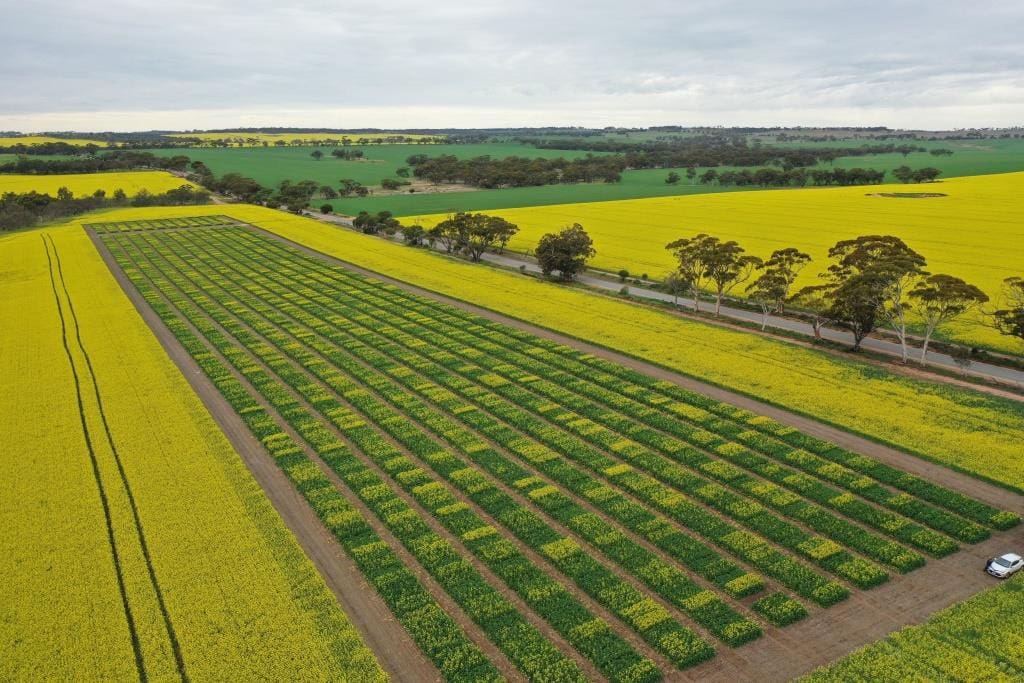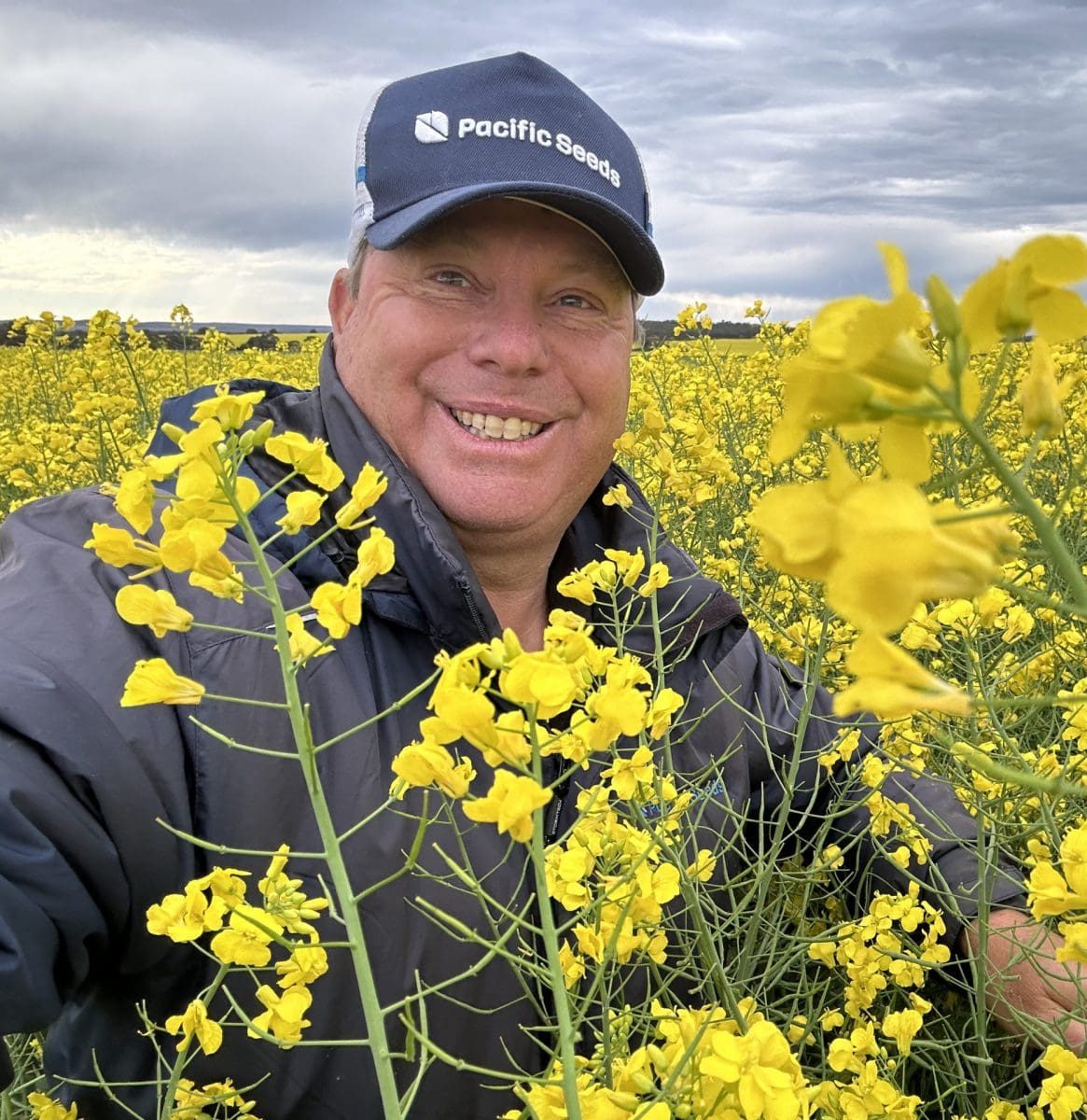
York in WA is one of Pacific Seeds’ 64 canola trial sites spread across Australia. Photo: Pacific Seeds
GROWERS across Australia are invited to gain insights into canola yield potential for varieties from most major seed companies, and across a range of seed technologies, based on data from the Pacific Seeds multi-environment (MET) systems trials.
Gathered over growing seasons from 2021-22 to 2024-25, the data is available through Pacific Seeds’ Canola Yield Tool, which generates an aggregated statistically analysed yield for 50 varieties grown over 64 sites.
While the National Variety Trial Long-Term MET Yield Reporter allows comparison of yield potential for varieties within technologies and by district, Pacific Seeds’ Canola Yield Tool is the only open-access resource which can indicate yields across as well as within technologies.
“A lot of growers now are using multiple herbicide technologies on their farms, and our Canola Yield Tool allows those to be accurately compared,” Pacific Seeds national canola technical specialist Justin Kudnig said.
More to consider
Canola varieties available in Australia have expanded from the initial open-pollinated offering to include tolerances to glyphosate, triazine, or imidazolinone, and Pacific Seeds also offers double-stacked varieties.
Growers have welcomed the greater choice, with hybrid varieties’ share of the market rising from half of Australia’s canola area five years ago to 90pc in 2024-25.
“A lot of that has been driven by wetter seasons, higher commodity prices, and also new herbicides and dual herbicide stacked varieties being in the market,” Mr Kudnig said.
With varying weed burdens by season, as well as crop rotations to consider, Mr Kudnig said the Canola Yield Tool has been developed to help growers identify varieties across different herbicide technologies that will work best in their farming systems.
“It allows them to factor yield performance as part of their integrated weed management planning.”
University of Wollongong Professor Brian Cullis was instrumental in developing the field trial designs behind the Canola Yield Tool, which became available via the Pacific Seeds website late last year.

Justin Kudnig.
The tool factors in data from 29 sites in Western Australia, seven in South Australia, 13 in Victoria, 14 in New South Wales, and one in Queensland.
Mr Kudnig said agronomists and growers have been using it to plan not only their variety choice, but their integrated weed management.
“On many farms, different paddocks have different weed burdens.
“In that case, being able to compare triazine-tolerant, Clearfield, and glyphosate-tolerant varieties, as well as double-stacked ones, will give growers a much better idea of not just the coming season but the one to follow.
“If they’ll have to spend more money on herbicides in cereals because they didn’t control weeds in canola as well as they could have by choosing a more suitable canola variety, then that can be a significant expense.”
Yield insights in threes
The Canola Yield Tool allows users to select up to three canola varieties at a time from a dropdown menu, and change varieties included as many times as desired.
The tool plots yield potential in 50kg/ha increments, and over trial mean yields ranging from 0.5t/ha to 4.5t/ha to indicate rainfall zones.
“If you have a CL variety that the tool indicates can yield 350kg/ha more than a TT one across all environments, and the commodity price is $750/t, then you’re $250/ha behind on gross return if you choose a TT.
“That kind of information allows the grower to make a much more informed choice on gross margins.”
Pacific Seeds’ Canola Yield Tool is also helpful in determining the yield advantage or penalty of using Clearfield technology that permits the use of IMI herbicides, which can limit options for the following year’s crops based on soil residual herbicide.
While climate, soil moisture, and seasonal conditions all influence varietal selection, Mr Kudnig said regional, district and even intra-farm weed-burden profiles will influence the grower’s choice of variety.
“In some regions, growers are not going to want to introduce glyphosate because of concerns about herbicide resistance, and in South Australia and Western Australia, there are a lot of IMI-tolerant wheat, barley, and pulse varieties, so they can use Clearfield or double-stacked canola varieties.”
Mr Kudnig said about 15pc of Australia’s canola area was now double stacked.
Pacific Seeds has plans to augment the Canola Yield Tool database with figures from future harvests, and to allow users to specify state and region in additional menus.
To access the Pacific Seeds Canola Yield Tool, click here.
To access information about Pacific Seeds canola varieties, click here.
Source: Pacific Seeds

HAVE YOUR SAY